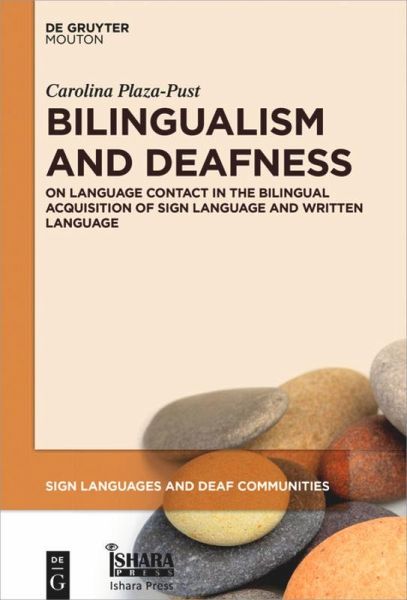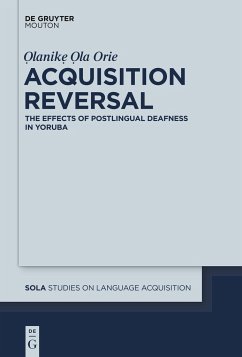
Bilingualism and Deafness
On Language Contact in the Bilingual Acquisition of Sign Language and Written Language
Versandkostenfrei!
Versandfertig in 6-10 Tagen
139,95 €
inkl. MwSt.
Weitere Ausgaben:

PAYBACK Punkte
0 °P sammeln!
This book examines sociolinguistic, educational and psycholinguistic factors that shape the path to sign bilingualism in deaf individuals and contributes to a better understanding of the specific characteristics of a type of bilingualism that is neither territorial nor commonly the result of parent-to-child transmission. The evolution of sign bilingualism at the individual level is discussed from a developmental linguistics perspective on the basis of a longitudinal investigation of deaf learners' bilingual acquisition of German sign language (DGS) and German.The case studies included in this ...
This book examines sociolinguistic, educational and psycholinguistic factors that shape the path to sign bilingualism in deaf individuals and contributes to a better understanding of the specific characteristics of a type of bilingualism that is neither territorial nor commonly the result of parent-to-child transmission. The evolution of sign bilingualism at the individual level is discussed from a developmental linguistics perspective on the basis of a longitudinal investigation of deaf learners' bilingual acquisition of German sign language (DGS) and German.
The case studies included in this volume offer unique insights into bilingual deaf learners' sign language and written language productions, and the sophisticated nature of the bilingual competence they attain. Commonalities and differences between sign bilingual language development in deaf learners and language development in other language acquisition scenarios are identified on the basis of a dynamic modelof change in the evolution of (learner) language, with a focus on the role of language contact in the organisation of multilingual knowledge and the scope of inter- and intra-individual variation in learner grammars. In many respects, as becomes apparent throughout the chapters of this work, sign bilingualism represents not only a challenge but also a resource. Given this cross-disciplinary perspective, the insights on bilingualism and deafness in this volume will be of interest to a wide range of researchers and professionals.
The case studies included in this volume offer unique insights into bilingual deaf learners' sign language and written language productions, and the sophisticated nature of the bilingual competence they attain. Commonalities and differences between sign bilingual language development in deaf learners and language development in other language acquisition scenarios are identified on the basis of a dynamic modelof change in the evolution of (learner) language, with a focus on the role of language contact in the organisation of multilingual knowledge and the scope of inter- and intra-individual variation in learner grammars. In many respects, as becomes apparent throughout the chapters of this work, sign bilingualism represents not only a challenge but also a resource. Given this cross-disciplinary perspective, the insights on bilingualism and deafness in this volume will be of interest to a wide range of researchers and professionals.













